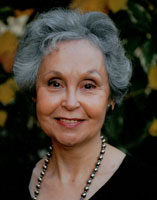Milk is not good for us. Meat is not good for us. Cigarettes are not good for us. Sugar is not good for us. Still, like a huge ship in a storm tossed sea, getting human nature to change its course, isn’t easy. In evolution, it may take thousands of years. The question is, do we humans have the luxury of time if we wish to save the planet? We know cattle grazing produces a fifth of the methane gas that promotes global warming. (The Kitchen Sink,” by Eric Newmann, Mother Jones, March/April 2016, pg. 64) But would a majority of humans give up meat to reduce the pace of climate change? I wouldn’t bet on it.
Fortunately, there’s hope in a story about a man who purchased a ranch in California only to discover its soil was so depleted of carbon, nothing would grow. Working with an ecology expert, he decided to experiment with grass. Everyone knows carbon can be absorbed and stored by grass for hundreds of years — a better place to deposit the element than in the air. We also know that carbon enriches the soil and makes the grass grow taller. Taller grass means deeper roots where more carbon can be stored. But how could the rancher get carbon into soil in the first place, so that grass would grow on his over-grazed and over-tilled land?
The answer turned out to be by composting. Organic waste, food scraps and manure, make a rich mixture of microbes that can penetrate the ground, possibly providing enough carbon for grass to grow. To test his theory, the rancher blanketed his ranch with compost and the quality of his soil improved faster than he imagined. Soon, his fallow fields were producing 25% more carbon than before. Doing a little math, his ecology expert concluded that if composting were put in to practice on 5% of California’s rangeland, those acres “could eliminate 7.6 million tons of carbon emissions over a three year period.” (Ibid pg 64.)
Unfortunately, many farms and ranches operate on leased property. The expense of adding compost on a large scale is too expensive for many operators. For composting to catch on, land owners would have to get involved. Some people are talking about a carbon-trade scheme to benefit those who participate in the program. With their cooperation, compost could be spun into gold.
Of course, had we the wisdom to listen to writer Carl Sandburg, we would have acknowledged the miracle of the grass ages ago.
I am the grass
Let me work.
(“Grass,” by Carl Sandburg)

Courtesy of yahoo.com
